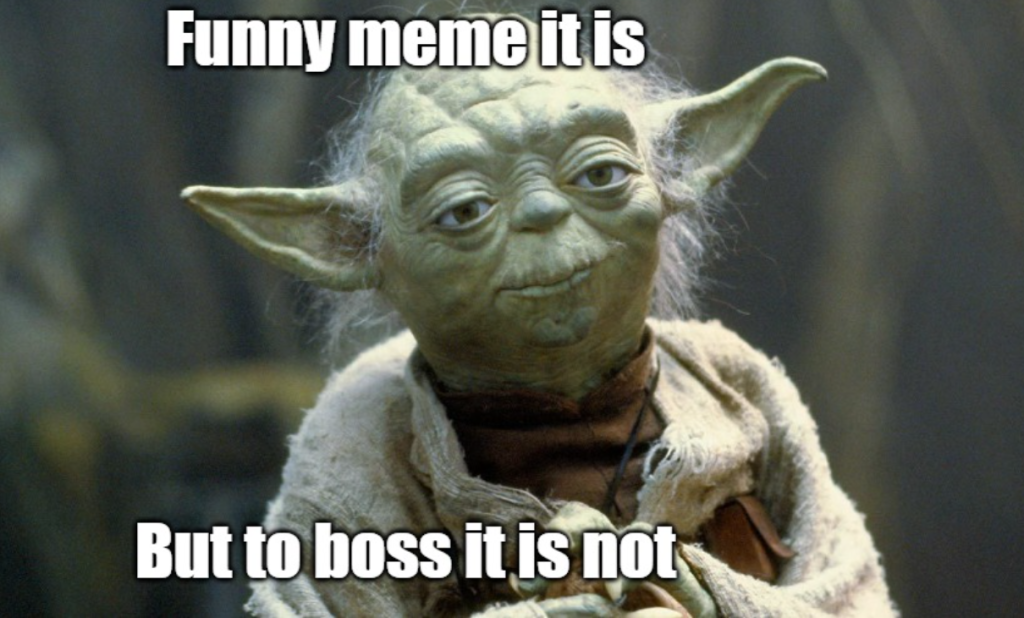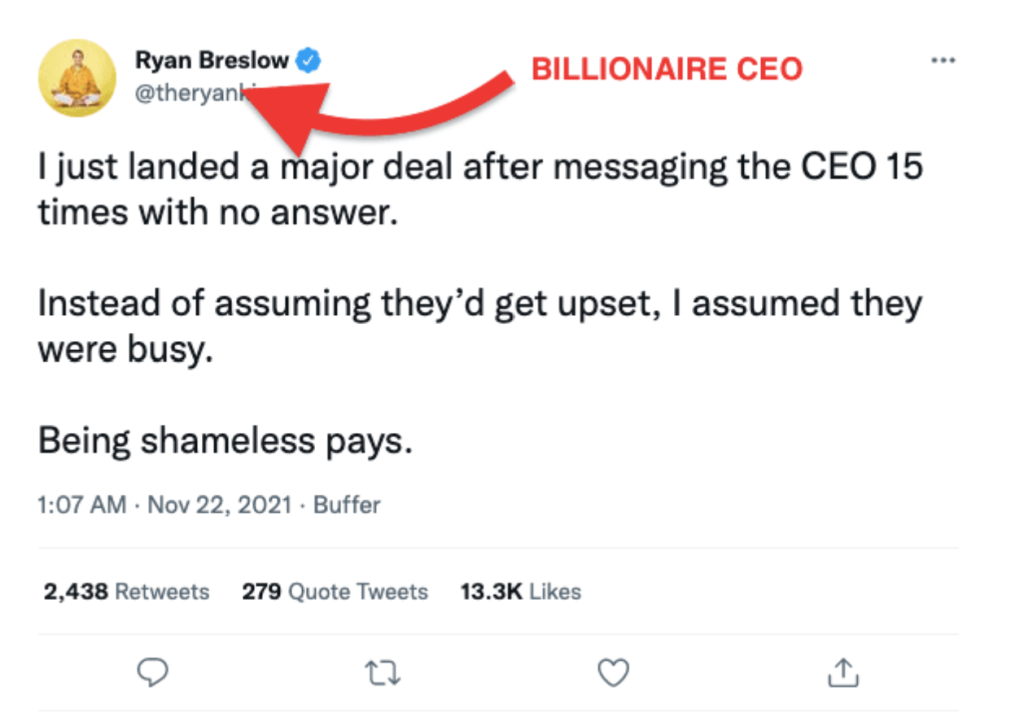- Home
- Friday Column
- How to Write an Email to a CEO ...

✨ Key takeaways:
⭐ Writing to a CEO requires clarity, relevance, and respect.
⭐ The best way to communicate with a CEO is to find the tone that fits both the person and the decision-maker.
⭐ Using proper titles and names is crucial.
⭐ Different CEOs respond to different tones: adapt your style to the person, not the position.
⭐ Avoid sounding flattering or desperate, and get to your point fast.
Imagine a CEO between back-to-back meetings. They hear their phone ding, open their inbox, and scan the first few lines of two new emails.
✅ Email 1: “Dear Ms. Carter, I’d like to quickly flag an issue that might be slipping past your team…”
Reaction: “Huh. Clear. Respectful. Concise. I’ll reply.”
❌ Email 2: “Hey there, boss! I’m a huge fan of what you’re doing!! I know you’re crazy busy, but…”
Reaction: “That sounds ridiculous. Delete.”
This is the difference between getting a response and…not getting one. When people write an email to a CEO, they often go straight into one of two extremes. Some swing too far into the casual zone, using greetings they’d send to a group chat. Others go the opposite direction and write with such stiff formality, it feels like they’re drafting a eulogy instead of trying to have a conversation.
What both forget is that CEOs are human. But they’re not just any human—they’re strategic thinkers with tightly packed schedules. So, if you want your message to get the attention it deserves, you have to speak to both the human and the decision-maker.
In this article, we’re going to break down how to write a CEO without sounding either like their best friend or like a rejected diplomat. We’ll look at what to say, what not to say, and how to get your tone, structure, and wording right—no matter who’s on the receiving end.
How to Address a CEO in an Email
Throughout my more-than-fifteen-year career, I’ve seen a lot of emails to CEOs. Some of them were good, while others blew it from the first line. And once you blow it in the first line, it doesn’t matter how good your complaint or pitch is because no one’s taking it seriously.
The thing is, the CEO does not read all your emails personally. Many of them are going through a chief of staff, or someone whose job is to skim for anything that sounds like it might turn into a legal liability or PR disaster. It means for your email to reach the CEO, it needs to be spotless.
Below we share some basics on how to maximize your chances for being answered by the CEO:
💎 Use proper titles (Mr., Ms., Dr., etc.)
When you write an email to a CEO, there are some things you just shouldn’t do. And high on that list is trying to get cute or casual. So don’t write something like “Hey.” Instead, use “Dear Ms. Taylor” or “Hello Mr. Gupta,” or whatever their actual name and title are.
When it comes to titles and CEOs, the general rule is: it’s better to use one than to skip it. If you’re not sure? Go formal. It’s safer to be a little too respectful than not respectful enough.
💎 Avoid casual greetings unless you already have rapport
Unless you have a long-standing relationship with the CEO, meaning you’ve worked together directly, they know who you are, and would recognize your name in their inbox—don’t assume informality is okay.
“Hiya,” “Hey there,” “What’s up”—are all big no-goes. Even if you’ve spoken to them before, a little formality doesn’t hurt. “Hi Ms. Rivera” or “Hello Mr. Grant” sounds neutral and respectful at the same time.
💎 Mention their title sparingly but appropriately
They know they’re the CEO, so you don’t need to keep reminding them. It’s perfectly fine to acknowledge their title once if it gives context to your message. Something like: “As the CEO of Greenbridge, I know you’re likely not involved in day-to-day support issues…” There’s no need to start every sentence with “You, as the CEO…”—that does not make your email more polite, but it does make it more awkward.
💎 Common fails to avoid: “Hey CEO,” “Dear Sir/Madam,” or skipping the name entirely
These are the greetings that guarantee your email will never get read. “Hey CEO”? Lazy and inappropriate. “Dear Sir or Madam”? Feels like you copy-pasted from a cover letter template you found in 2004. Skipping the name altogether? That just says you didn’t care enough to look it up.
If you’re sending a sample email to the CEO of a company, the absolute minimum you can do is figure out who the CEO is. Their name is public. It’s on the company website. It’s in press releases and on LinkedIn.

How to Email a CEO: What CEOs Really Want to See
So let’s say you’ve got your greeting right, and now you’re staring at the blinking cursor wondering, What the hell do I actually say? Writing an email to the CEO isn’t about sounding impressive. It’s about not wasting their time. Most CEOs are scanning their inboxes between meetings, during airport layovers, or while half-listening to a boardroom pitch. So, you need to get to the point fast.
But that’s only one part of the story. You also should not forget that all CEOs are different, which means the style of your message shall consider their specifics.
🧍♂️ “Busy Brenda” — wants bullet points, bolded headers, and 30-second summaries
Brenda doesn’t care about your 400-word origin story. She wants the who, what, why, and what-you-want-from-her—preferably all on one screen.
In this case, structure your email to the CEO like a memo. Lead with context, give her numbered points, and finish with a clear ask. Try to draft your email in a way that it does not take her more than a minute to scan.
🧍♂️ “Visionary Victor” — loves bold ideas and big-picture thinking
Victor wants to be inspired. He’s already got 15 strategy decks in his inbox—what he’s looking for is the one that makes him sit up and think, Huh. That could actually change things.
If your email to a CEO is for someone like this, lean into vision. Show you understand the company’s bigger goals and that your idea fits into that goal. Don’t try to be excessively polite and flattering—quite the opposite. People with big visions prefer bold and clear proposals.
•🧍♂️ “Old-School Oscar” — formal all the way
Oscar likes structure. He reads emails the way he reads legal memos. Don’t try to charm him with metaphors, but rather give him the information, preferably formatted in a clean way.
If you’re wondering how to address a CEO in an email and Oscar’s your guy—default to formal. It means:
- Use full sentences.
- Grammar matters, so don’t forget it either.
- No contractions, no slang.
If your tone reads like it could’ve been printed and delivered in an envelope—that’s your bonus point.
🧍♂️ “Tired Taylor”—has seen it all, won’t tolerate nonsense
Taylor is totally overwhelmed and is on her third call of the hour, so she is already suspicious of anything labeled “exciting opportunity.” You need to earn her attention by not trying so hard.
The best approach with a tired Taylor type of CEO is to write like a human that respects her time. Try giving her one good reason to care, preferably without too much fluff around your offer.

Write Like a Pro, Not Like a Fanboy
The most common mistake people make when they write an email to a CEO: they lose their ability to think clearly.
Suddenly, normal, competent people start sounding weirdly emotional and write five paragraphs about how much they admire the company. Having the best intentions in mind, they suddenly turn against themselves.
Here’s a quick test to see if you are going in the wrong direction with your CEO email:
- “It’s truly an honor just to write to you.”
- “I’ve been following your journey since you were at [company from 2008].”
- “I know you’re incredibly busy, but I’d be so grateful if…”
If you notice writing any of these sentences or similar—delete them immediately. You don’t need to beg. You’re writing to another human being—maybe a powerful one, but still just a person with an inbox full of other emails.
If you’re wondering how to write a CEO, below you’ll find some useful tips that will help you be more professional than performative.
The 15-Second Rule: Survive the CEO Scan Test
With people like CEOs, busy with strategic decisions and dozens of things on top of that, you’ve got about 15 seconds max to make your case.
So before you get poetic about your backstory or start building a slow narrative arc… don’t. Instead, ask yourself the following questions:
- Why am I writing?
- What’s the issue?
- What do I want?
No one has ever complained that an email to them was too clear or too well structured.
If you’re still struggling with being concise but informative, here are two versions of a sample email to the CEO of a company, each with a slightly different tone—but both passing the 15-second test and avoiding the fanboy trap.
✅ Example 1: Clear, direct, and formal
Subject: Partnership Opportunity—Improving ESG Data Reporting
Dear Ms. Hartley,
I’m reaching out to explore a potential collaboration between your ESG team and our data analytics platform. Our recent work with several publicly traded companies has helped reduce compliance reporting time by up to 40%.
I’ve attached a one-pager outlining how this might benefit your operations. I’d be happy to walk you through it if this is something you’re exploring in the next quarter.
Best regards,
Daniel Reyes
Founder, MetricsBridge
Why is it good?
This email to the CEO sample is formal, focused, and gets to the point fast. It shows value, makes a specific offer, and respects the CEO’s time. It offers no unnecessary backstory or flattery. It’s professional and easy to skim—which is exactly what a CEO is looking for.
✅ Example 2: Casual but confident
Subject: Quick Idea—A Better Way to Onboard New Users
Hi Taylor,
I saw your LinkedIn post about reducing churn in the first 30 days. I’ve been working with early-stage teams tackling this exact problem, and I had a quick idea that might be relevant.
It’s lightweight, fits into your current onboarding flow, and might be worth testing. Can I send over a few screenshots?
Best,
Maya
Why is it good?
This email to the CEO example is more relaxed but still respectful. This works when the CEO is known to be approachable or active in public spaces like LinkedIn. It’s clear, useful, and still follows the 15-second rule: the idea is right there in the open.
To Sum Up
In this article, we’ve tried to show that writing to a CEO doesn’t have to be nearly as complicated or terrifying as people tend to imagine. Because even the most powerful person in the company is still a human being. A human being with a full inbox and limited time.
So when you’re thinking about how to write a CEO, don’t aim for perfection. That usually just makes you sound awkward. Instead, aim for something real. Say what matters, skip what doesn’t, and make it easy for them to say yes.
When you show the basic knowledge of etiquette combined with sounding human and trying to provide value, that’s what’s going to get you to company CEO.



